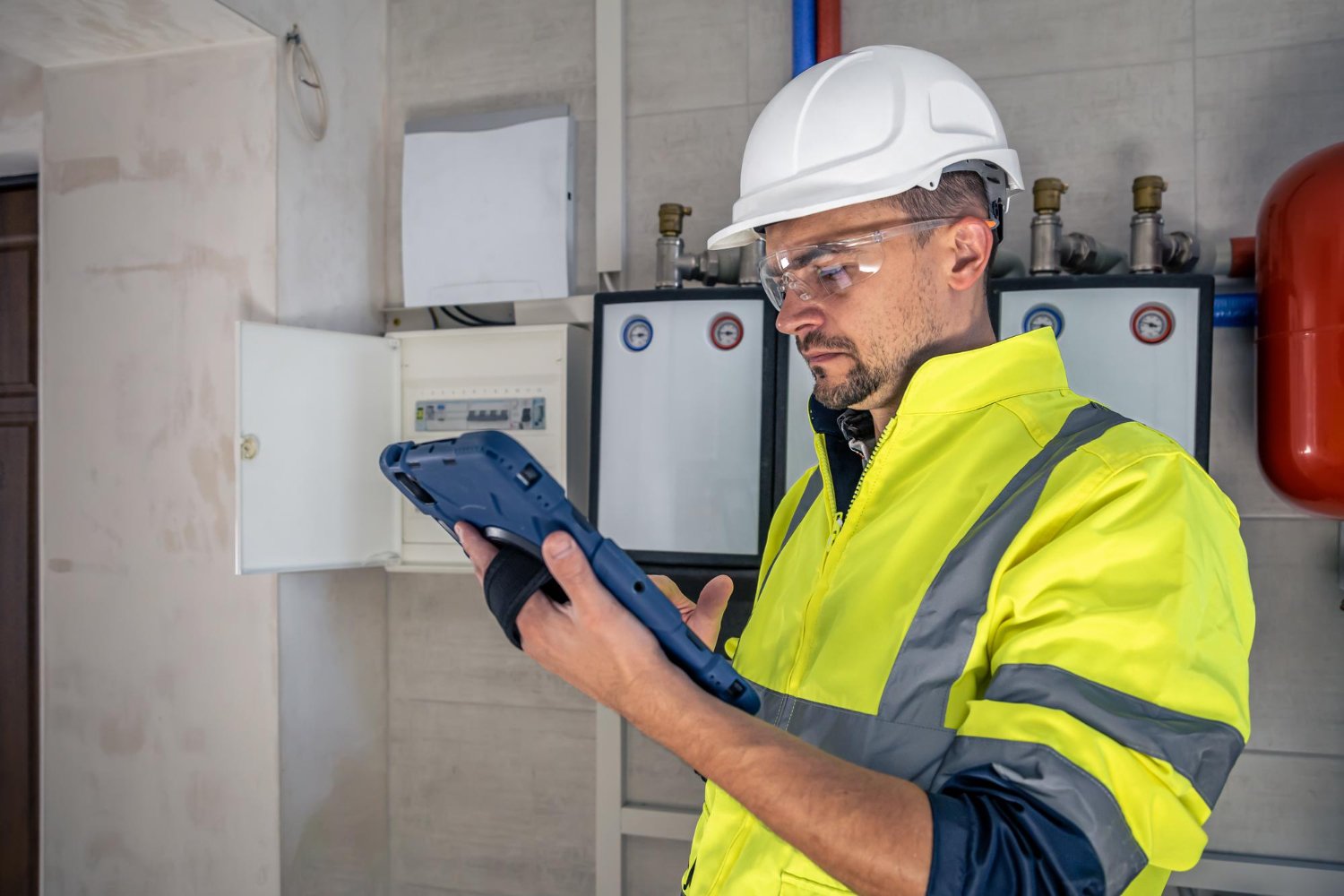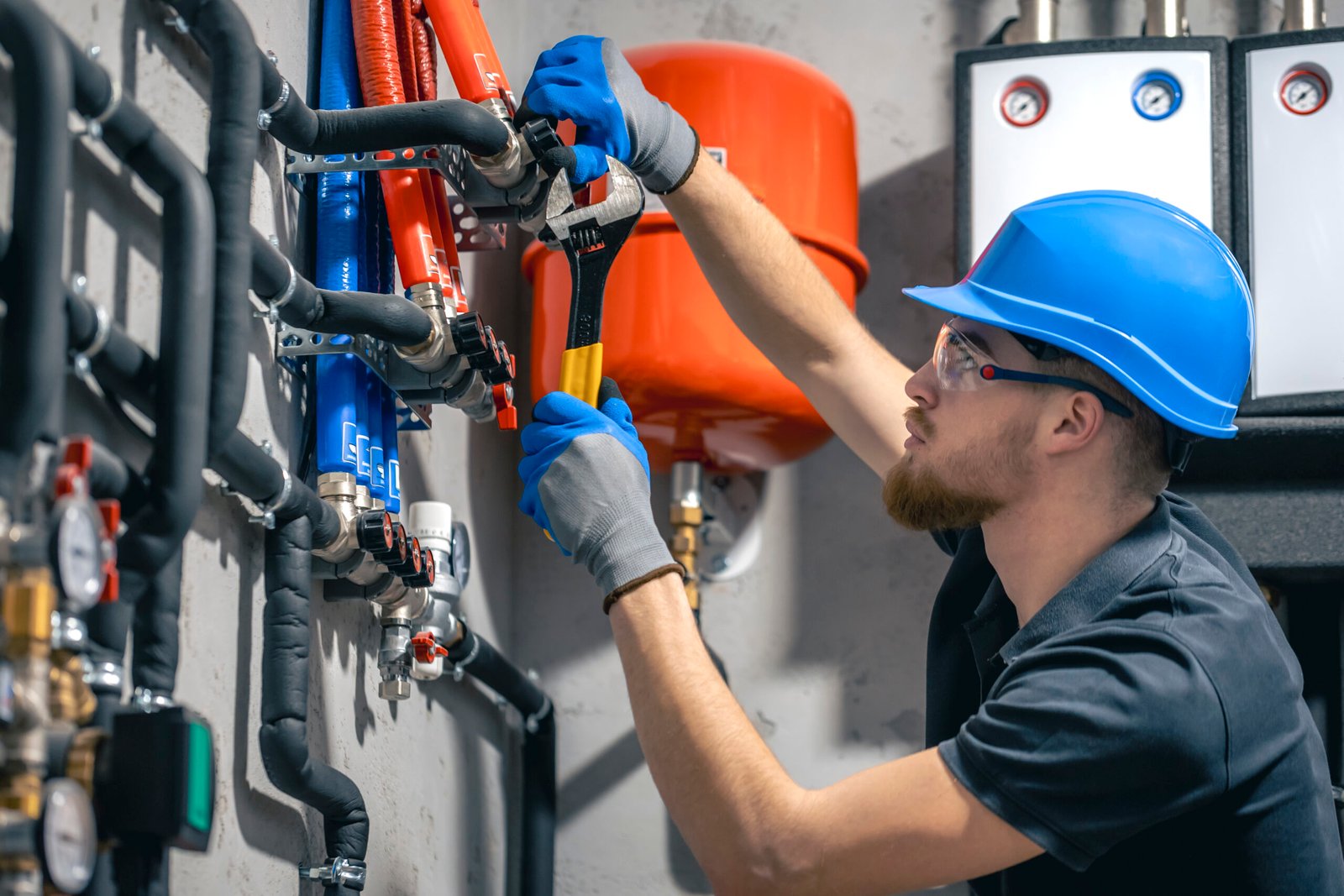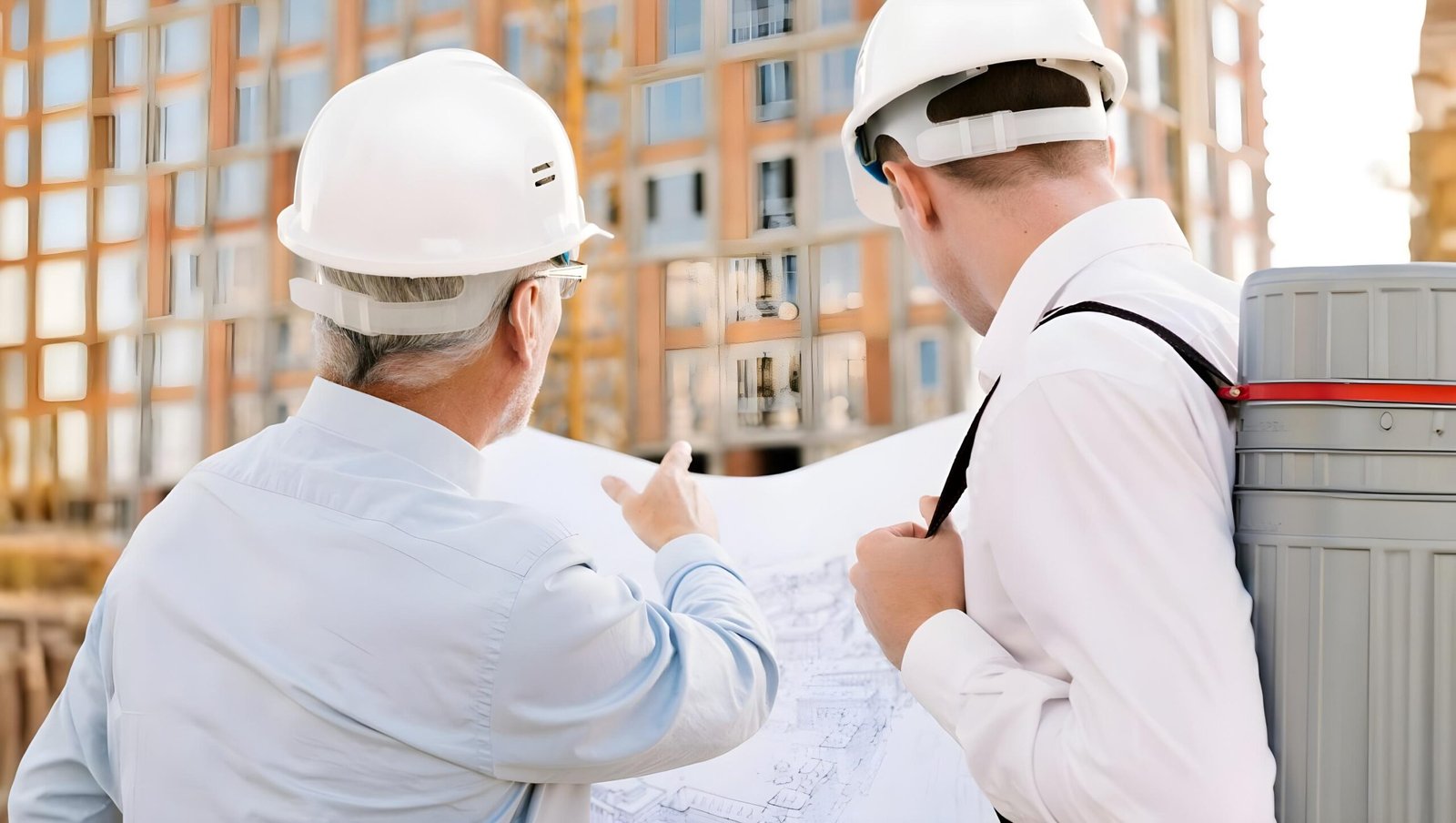
Key Regulations and Compliance Issues in 40-Year Building Recertification
John Souffront

Did you know over 40% of homes in cities don’t pass safety checks at 40 years old? It shows how important it is to have buildings checked regularly. In places like Miami-Dade County, buildings must be inspected every 40 years and then every 10 years. These checks are key to keeping buildings safe and strong.
Knowing the rules for 40-Year Building Recertification is crucial. These strict laws can cause significant problems for property owners who ignore them. We’ll examine why these rules are essential, how recertification works, and what happens if you skip these checks.
Key Takeaways
- Mandatory inspections at 40 years and every 10 years thereafter.
- Compliance ensures the safety and structural integrity of buildings.
- Failure to meet inspection requirements can lead to severe penalties.
- Licensed professionals play a crucial role in the recertification process.
- Awareness of local regulations is essential for property owners.
- Optimizing inspection preparedness can ease compliance processes.
- Building safety inspections protect tenants and enhance building value.
Understanding 40-Year Building Recertification
40-Year Building Recertification is key to keeping buildings safe and up to code. It checks if buildings are strong and meet today’s building standards. It is essential to keep people safe from dangers in old buildings.
Definition and Importance
Significant buildings over 2,000 square feet need a first check after 40 years. Then, they must be checked every ten years. Miami-Dade County started this program in the 1970s after a big building failure in 1974. Buildings 30 years old by December 31, 2024, must also be checked, showing its importance.
The Role of Local Authorities
Local authorities play a big role in checking buildings. They send notices to owners to get reports within 90 days. They also check things like foundations and electric systems. Following these rules is crucial for keeping cities safe. Not following them can lead to hefty fines and even having to leave the building.
The Purpose of Recertification Inspections
Recertification inspections are key to keeping old buildings safe and lasting longer. They ensure that buildings still follow safety rules, which is very important in Florida. The state has strict rules because of its humid weather and hurricanes. Regular inspections are needed to keep buildings safe and comply with the law.
Ensuring Safety and Structural Integrity
Licensed engineers inspect buildings during these inspections. They examine the structure, electrical, plumbing, and mechanical systems to ensure everything meets Florida’s safety standards.
They often find problems like cracks, corrosion, and water damage. It shows why it’s essential to fix these issues early.
Identifying Issues in Aging Structures
Spotting problems early can save money and show a building’s safety. Not finding issues can lead to big fines and legal trouble. Keeping a building up to date helps sell or lease it, showing it’s well-maintained.
Key Regulations Impacting Recertification
Knowing the rules is key to passing the recertification test. Miami-Dade County has updated its laws. These changes focus on safety and following the rules.
Recent Changes in Miami-Dade County Laws
In June 2022, Miami-Dade County made significant changes to building inspections. These updates apply to buildings three stories or higher. They aim to make structures safer with tighter deadlines, especially for coastal areas.
Buildings near the coast must follow these new rules to meet safety standards. For example, older buildings must be checked every 10 years. It shows Miami-Dade’s dedication to keeping its cities safe.
State Regulations and Compliance Codes
State laws and codes control the recertification process and ensure building safety. In Florida, buildings over 30 years old must pass inspections on time.
Coastal condos and buildings built between 1983 and 1997 face stricter rules. They must pass their first inspection by December 31, 2024. Not following these rules can lead to significant fines. It shows how important it is to follow the code.
The Importance of Licensed Engineers and Architects
Licensed engineers and architects are crucial in the recertification process. They do detailed inspections and check if buildings follow all rules. The recent changes make them more responsible for preventing building failures.
Their work is essential. They ensure that buildings are safe and meet all local and state rules, protecting people and their investments.
The Recertification Process: Step-by-Step
The recertification process is key for keeping older buildings safe and up to code. It starts with licensed engineers checking essential parts of the building. They look for any issues that need fixing or updating.
Initial Assessments by Licensed Engineers
Licensed engineers are essential in the recertification process. They check the building’s structure, such as the foundation and walls, and make sure everything meets current safety rules.
These checks are detailed and focus on safety risks. It helps meet the recertification timeline.
Structural and Electrical Inspection Procedures
After the initial checks, engineers examine the building’s structure and electrical systems. They ensure that everything is safe and up to code, which might mean making changes to improve safety and access.
They keep detailed records of these inspections, which helps building owners show they follow the rules and is essential for making any needed fixes.
Compliance with Recertification Codes
For property owners in Florida, it’s key to understand and meet recertification code requirements. The 40-year recertification process requires safety checks by licensed Professional Engineers every 10 years for buildings three stories or taller and over 30 years old. Local counties often require recertification at 25 or 30 years, with yearly checks.
The main goal is to fix structural and electrical problems quickly. It keeps people safe and extends the property’s life.
Understanding the Requirements
Property owners must ensure licensed engineers do all inspections. Florida counties keep detailed databases of these inspections and certifications, which helps track whether buildings are meeting the rules.
New state laws made the rules stricter Starting May 26, 2022. They include “milestone inspections” for specific buildings, with deadlines by December 31, 2024. And for those having 12/31/2024 as the due date can get an extension of 60 days, up to March 1, 2025. Not following these rules can lead to big problems.
Penalties for Non-Compliance
Not following the rules can lead to fines starting at $510. If not fixed quickly, these fines can go up to $10,000 per violation. The effects of not following the rules are not just money. They also increase the owner’s liability for safety issues.
It’s crucial to keep up with compliance efforts. It ensures safety and avoids expensive fines.
Common Issues Found During Recertification Inspections
During recertification inspections, many common issues are found. These issues need to be fixed quickly. Problems like structural cracks and wear and tear are significant concerns. They can make a building unsafe and weak.
These problems often come from the environment and old materials getting worn out. It’s essential to find these issues early. It helps keep everyone safe.
Structural Cracks and Deterioration
Structural cracks in walls and foundations are severe signs of more significant problems. They can get worse over time. These cracks might be from uneven loads, settling, or rust in concrete bars.
Not fixing these cracks can lead to significant structural failures. It shows why building recertification is so essential.
Water Damage and Electrical Hazards
Water damage is another major issue found during inspections. It’s often caused by bad waterproofing and drainage, which can cause mold and damage to important parts of the building.
Also, old or wrong electrical wiring is a significant safety risk. Finding these problems early is key to keeping people safe, and fixing them can save a lot of money in the long run.
| Common Issues | Potential Causes | Impact on Safety |
| Structural Cracks | Corrosion, load distribution | Compromised building integrity |
| Water Damage | Poor drainage, inadequate waterproofing | Mold growth, structural decay |
| Electrical Hazards | Outdated wiring, improper installations | Fire risks, shock hazards |
Fixing these common issues can ensure the safety of your building and keep everyone in it secure.
Choosing Professional Recertification Consultants
Working with professional recertification consultants can make the inspection process more manageable. They know a lot about Florida’s building codes and regulations. It ensures your property is safe and meets all requirements.
Benefits of Hiring Experts for Inspections
Hiring seasoned professionals offers many benefits. For example:
- Regular inspections keep your property safe and in compliance with local laws.
- Experts must have valid licenses, proving they are qualified for the job.
- They stay updated on new safety practices and building codes through ongoing education.
- They have a track record of successful projects, showing they can provide accurate reports.
How to Choose the Right Consultant
Choosing the right consultant requires careful thought. Consider these factors:
| Criteria | What to Look For |
| Experience | Look at their past work in building recertification projects. |
| Technical Proficiency | Make sure they know Florida’s building codes and safety rules. |
| Customer Service | Choose someone who values open communication and quick responses. |
| Value for Money | Check if they offer good rates and ways to save money. |
| Testimonials | Ask for feedback from previous clients about their experiences. |
Choosing a reputable consulting firm can save you a lot of time. It also helps keep your property in good shape. This lets you focus on other important things.
Conclusion
The need to build recertification is enormous, especially in Florida, which has aging buildings. This process keeps buildings safe and sound, even after years of weather and wear. The collapse of Champlain Towers South shows how important it is to check buildings well and follow recertification rules.
Building owners need to know the rules for recertification. Laws require checks for buildings over three stories and older than 30 years. It affects almost 900,000 condo units in Florida. Following these rules and using the right inspectors helps secure your property and investment.
In short, the recertification process is more than just a rule. It’s a way to keep everyone safe and your property’s value up. Staying updated on building laws helps protect your investment and the community. It shows you care about following rules and keeping people safe. And if you want to get your property inspected, feel free to contact our team. The initial consultation will be on us.
FAQ
What is a 40-Year Building Recertification?
40-Year Building Recertification is a must for buildings over 30 years old. It checks whether they’re safe and meet new standards, which is key to ensuring that old buildings are strong and safe for tenants.
Why is building recertification important?
It keeps old buildings safe and sound, ensures they follow city rules, and protects people living there from harm.
What does the recertification inspection procedure involve?
First, licensed engineers inspect the building’s structure and electrical systems. They find any safety problems that need fixing immediately.
What are the recent changes to Miami-Dade County recertification laws?
Miami-Dade County changed its rules in June 2022. Now, buildings over three stories tall face new checks, and coastal buildings have even tighter rules.
How can I ensure compliance with recertification codes?
To follow the rules, know the local and state laws. Keep all documents up to date. Fix any problems found during checks. And use experts for recertification.
What penalties are imposed for non-compliance?
Not following the rules can cost a lot. You might face hefty fines. And there could be dangers for people living in the building.
What common issues are found during recertification inspections?
Inspections often find cracks, water damage, and electrical dangers. These problems are caused by the environment and how buildings age over time.
How can professional recertification consultants assist me?
Experts can make the process easier. They help follow the latest building codes. They also take some of the work off your hands with their knowledge and experience.
John Souffront
John Souffront is a seasoned leader in the construction and engineering industry, with over a decade of experience at the helm of Souffront Construction & Engineering. Known for his unwavering commitment to excellence and innovation, John has propelled his firm to the forefront of the field, delivering cutting-edge solutions for complex projects around the country.
Build Your Project
Ensure safety and compliance on your construction site with our experienced team. Call us today.
Contact Us

